10 Biggest Cities In Russia
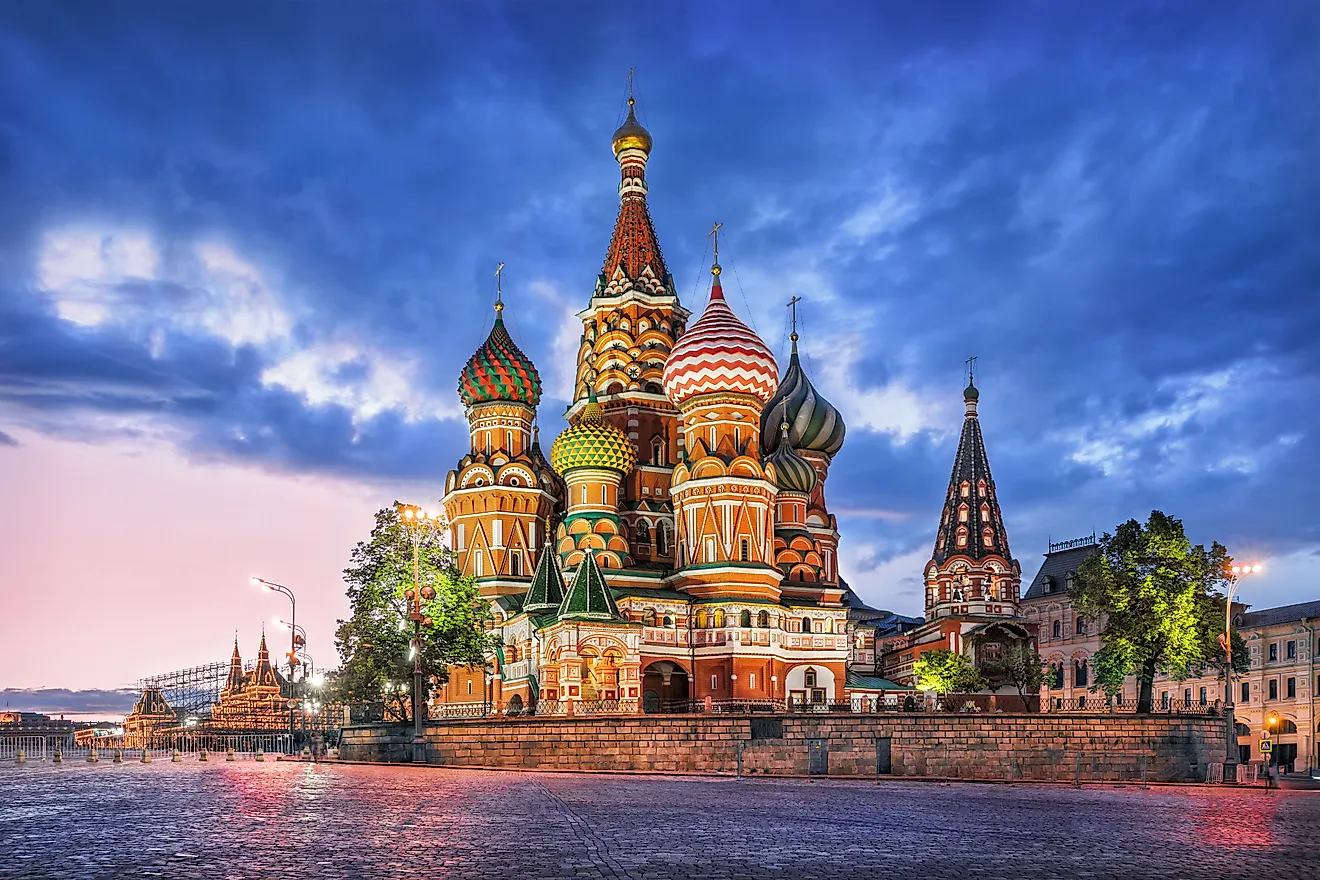
- The majority of Russian residents live in the European part of the country, totaling around three quarters.
- About 12.7 million people live in Moscow, but the population could actually be much higher because of undocumented immigrants.
- St. Petersburg is Russia's major port city and has a population of about 5.4 million people.
With a population of about 145,952,314 people, Russia is the most populated country in Europe and the ninth most populated country in the world. The vast majority of Russia's residents live in the European part of the country in major cities like Moscow and St. Petersberg. Russia has the largest land area of any country on Earth, and it actually spans from Eastern Europe all the way to the Pacific Ocean. Russia is a transcontinental country: 77% of Russia's area is in Asia while 23% is in Europe.
The Asian portion of Russia is sparsely populated, but there are still some major cities in this region like Novosibirsk, Krasnoyarsk, and Omsk. Only 25% of Russians live in Asian Russia, while 75% of Russians live in European Russia. Here are the 10 most populated cities in Russia.
1. Moscow - 12,678,080
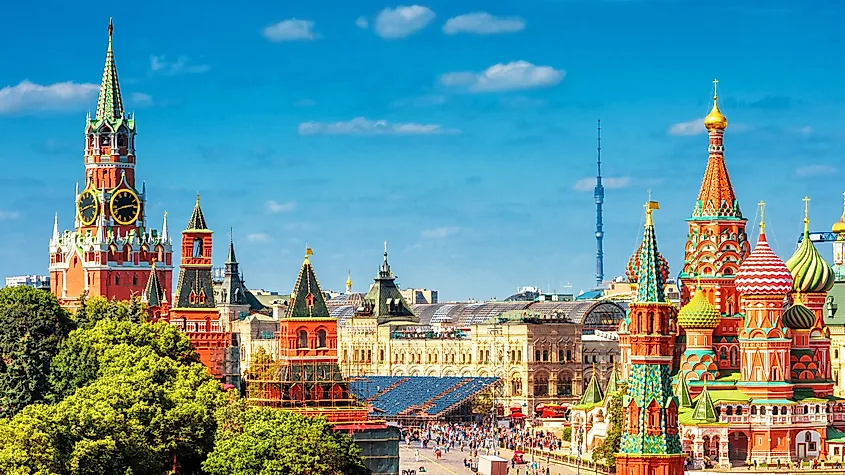
The majority of Russian citizens live in the capital of Moscow. Moscow, which is the second-most populated city in Europe, is known for its rich culture and vibrant history. The population has exploded in the last 70 years. Today, about 12.7 million people live in Moscow, and the city’s population in 1950 was just 5.3 million. Moscow’s population may actually be much larger than what official figures show. There are believed to be many undocumented immigrants living in Moscow city limits, and the actual population of Moscow may be between 13 million and 17 million. Moscow is the northernmost megacity in the world and the 11th most populated city on Earth.
2. St. Petersburg - 5,398,080
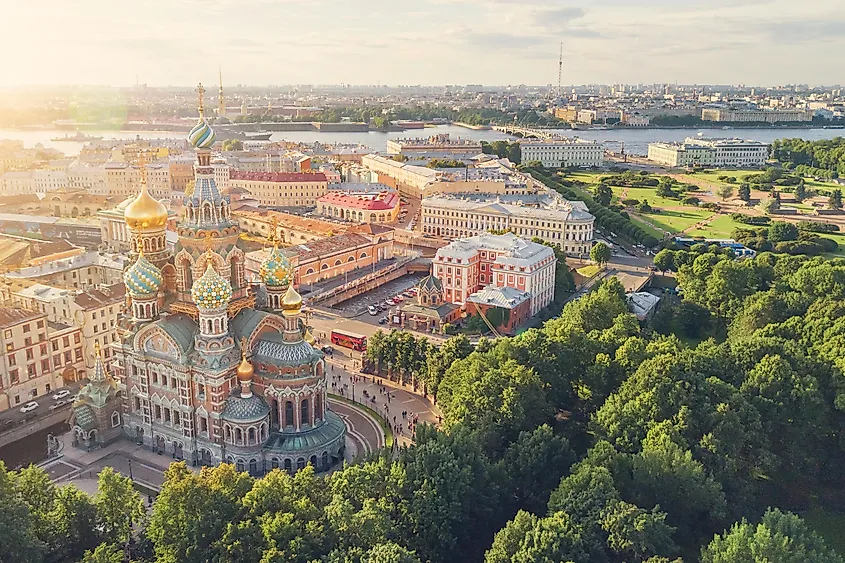
St. Petersburg, which is the former capital of Russia, has a population of about 5.4 million people. It is the second-most populated city in Russia mainly because of its location on the Baltic Sea and its status as the former capital. St. Petersburg is a major port city and one of the most important transportation hubs in Russia. The Port of St. Petersburg is the largest port in Russia and sees both commercial and cruise ships as it is of international significance. St. Petersburg is also known for its extensive rail system which connects to cities like Moscow, Warsaw, and Helsinki. The Russian government is also in the process of planning a high-speed railway that will connect St. Petersburg with Moscow and Nizhny-Novgorod.
3. Novosibirsk - 1,625,310
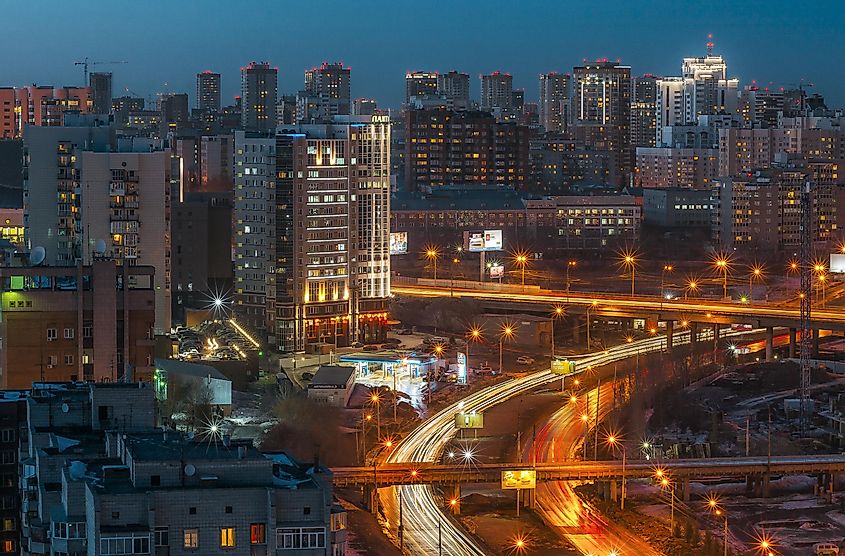
Novosibirsk is the third-most populated city in Russia with a population of about 1.6 million people. It’s the most populated city in Asian Russia and known for its manufacturing industry. Novosibirsk manufactures heavy equipment, mining machinery, electrothermal equipment, hydraulic presses, farm machinery, and many other types of machinery that are vital to Russia’s economy. The city’s manufacturing industry has caused the city to grow, and it is now the most populated city in Siberia, as well as being the region's cultural and educational hub. Novosibirsk’s prime location on the Ob River made it the ideal place to produce hydroelectricity, so the Novosibirsk hydroelectric station was opened in 1957.
4. Yekaterinburg - 1,494,750
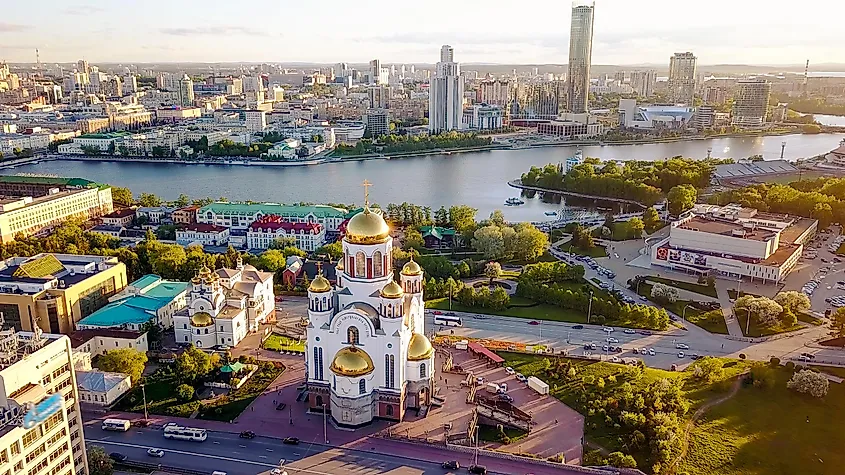
Yekaterinburg is the fourth-most populated city in Russia with a population of about 1.5 million people just slightly East on the Asian side of the border between European and Asian Russia. The city is primarily known for its culture and education. Yekaterinburg is also a science and research hub; the Urals branch of the Russian Academy of Sciences is located in the city. World-renowned mathematicians, scientists, physicists, and chemists conduct research here. Gorky University is located in Yekaterinburg, and the city is also home to institutions specializing in mining, agriculture, and forestry.
5. Kazan - 1,257,390
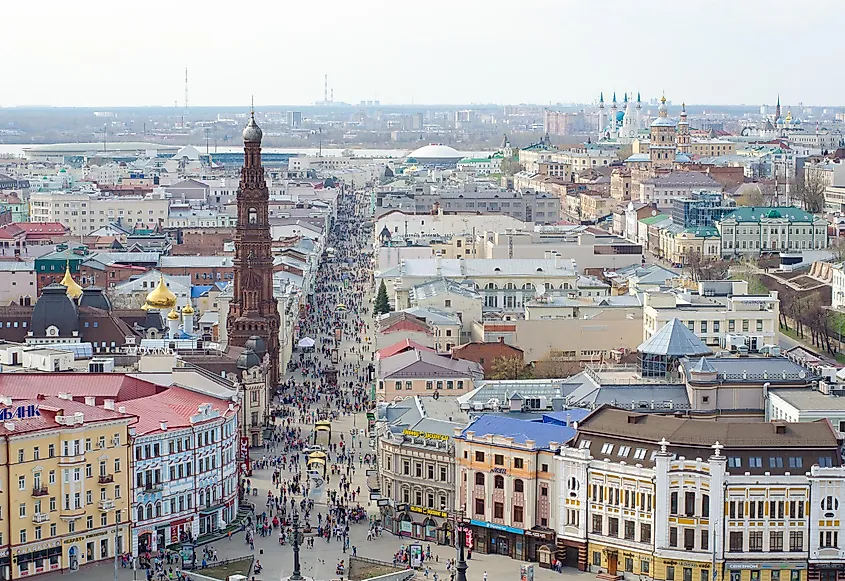
Kazan is the fifth-most populated city in Russia with a population of about 1.26 million people. The city was founded by the Mongols in the late 13th century after they overthrew the Bulgar Kingdom that ruled, and it was the capital of an independent state until it was captured by Ivan IV the Terrible in 1552. By the early 1900s, Kazan was one of Russia’s foremost manufacturing and trade cities. Many of the industries that thrived during this time are still predominant in the area, such as leatherworking and soapmaking. Many Kazan residents now work in fields like oil refining, chemical production, and engineering.
6. Nizhny Novgorod - 1,252,240
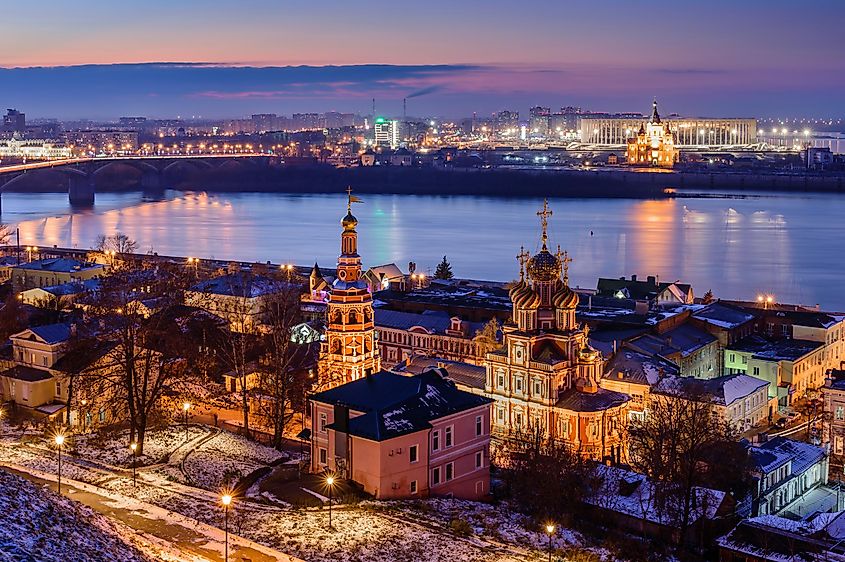
Nizhny Novgorod is the sixth-most populated city in Russia with a population of about 1.25 million people. It sits at the intersection of the Oka and Volga rivers, 260 miles (420 km) from Moscow. The city is known for one of the largest auto factories in Russia. The Gorky Automobile Plant manufactures autos and automotive parts, and bears the former name of this city until 1990: Gorky. Nizhny Novgorod also produces river crafts, ships, machinery, and diesel engines which are shipped all over Russia via the city’s extensive rail system.
7. Chelyabinsk - 1,196,680
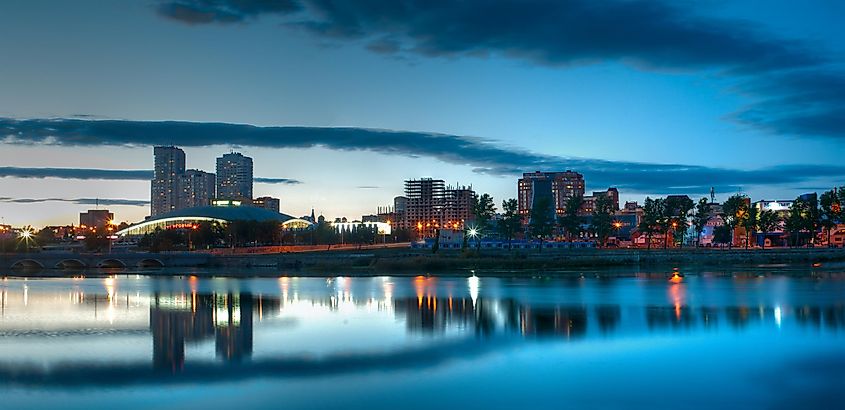
Chelyabinsk is the seventh-largest city in Russia with a population of almost 1.2 million people. It is located in the Asian portion of the country on the geological edge of the Ural Mountains, near Russia's border with Kazakhstan. The city, which was founded as a fortress in 1736 to defend caravans in the area from the Turkish ethnic Bashkirs, is one of Russia’s most vital industrial centers. The Chelyabinsk Electrometallurgical Plant is the biggest ferroalloy plant in all of Russia, and Chelyabinsk is also known for producing finished metal products, stainless steel, and zinc. This city actually produces 60% of Russia's zinc and 2% of the international supply of the element. Chelyabinsk has a higher level of air pollution because of the numerous factories in the city.
8. Samara - 1,156,660
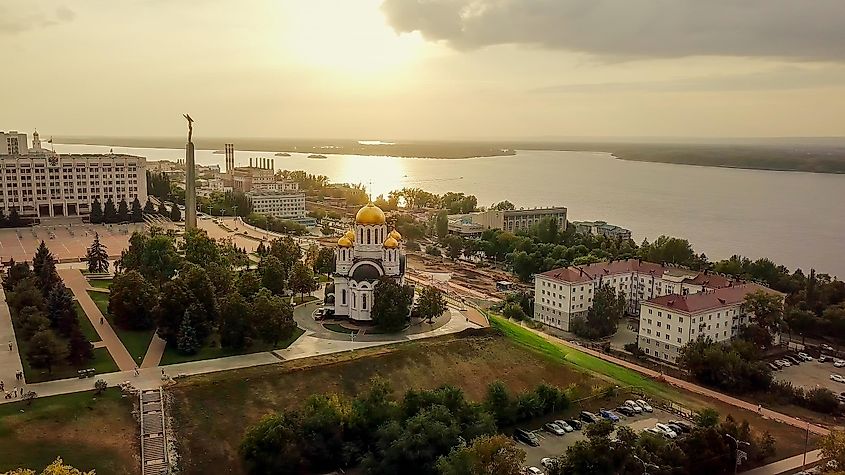
Samara is the eighth-largest city in Russia with a population of about 1.16 million people. The city was founded in 1586 and quickly grew because of its location along the Volga River and its importance as a stop on the Volga trade route. It was actually founded as a fortress to safeguard the trade route. The city saw massive growth following World War II thanks to the development of the Volga-Urals oilfield and the need to move governmental functions out of Moscow when the city was under threat of German attack. Today, Samara specializes in refining oil and developing petrochemicals, and is the centre of a large network of oil pipelines. It was called Kuybyshev from 1935 to 1991, then it reverted back to its former name.
9. Omsk - 1,154,510
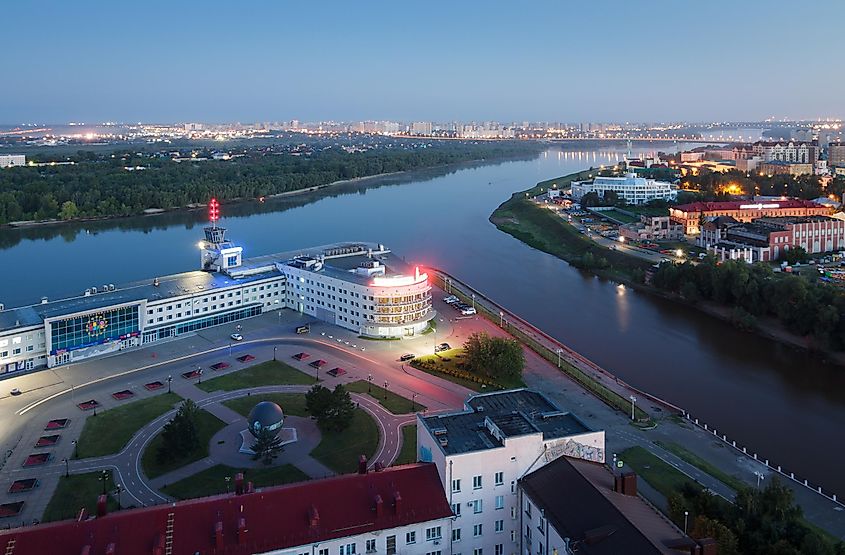
Omsk is the ninth-largest city in Russia with a population of about 1.15 million people. Located on the Irtysh River, the city of Omsk was originally developed as an agricultural center, but today the primary industries of the city are manufacturing and oil refining. It saw considerable development during World War II to meet the manufacturing demand from the war. Oil is now sent to Omsk from the Volga-Urals and West Siberian oil fields via pipelines. The oil is refined and also used to create goods like synthetic rubber tires.
10. Rostov-on-Don - 1,137,900
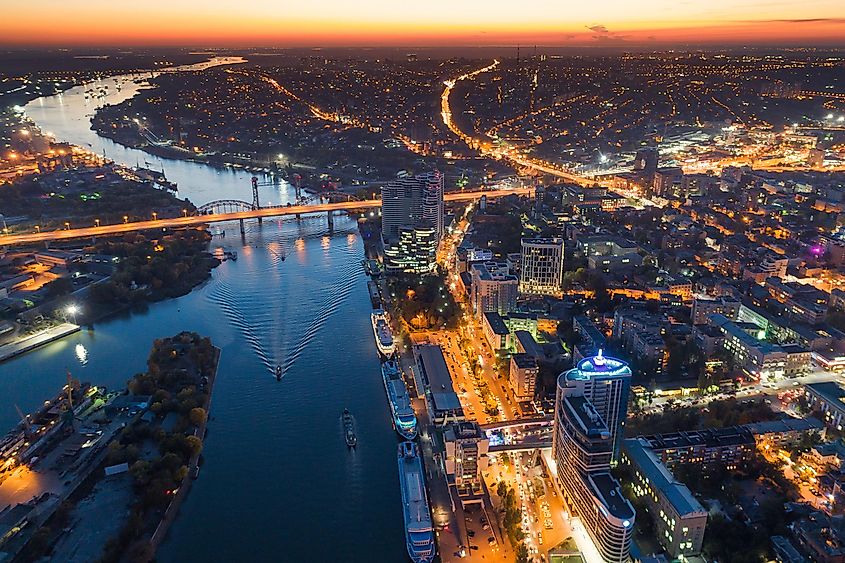
Rostov-on-Don is the tenth-largest city in Russia with a population of about 1.14 million people. Rostov-on-don is known for education, science, and culture, and can be found right near the country's border with Ukraine. Southern Federal University serves 56,000 students, which makes it one of the largest universities in Russia. Russians from all over the country travel to Rostov-on-don to take in festivals. The city holds comedy festivals and jazz festivals every year. It is also a major transport center for the South West of the country, with important highways and train routes.
Population trends
Russia’s population is expected to reach a peak at the end of 2020 and start declining in early 2021. Russia is currently the ninth-most populated country in the world, but the country could fall to 17th on the list by 2050. Despite efforts by Prime Minister Vladimir Putin to encourage population growth, low birth rates and an aging population are two factors that have contributed to Russia’s recent stagnant growth. These trends are expected to continue and result in a severe population decline in the near future.
10 Biggest Cities In Russia
| Rank | Russian city | Population as of Jan 1, 2020 |
|---|---|---|
| 1 | Moscow | 12,678,080 |
| 2 | Saint Petersburg | 5,398,080 |
| 3 | Novosibirsk | 1,625,310 |
| 4 | Yekaterinburg | 1,494,750 |
| 5 | Kazan | 1,257,390 |
| 6 | Nizhny Novgorod | 1,252,240 |
| 7 | Chelyabinsk | 1,196,680 |
| 8 | Samara | 1,156,660 |
| 9 | Omsk | 1,154,510 |
| 10 | Rostov-on-Don | 1,137,900 |
| 11 | Ufa | 1,128,790 |
| 12 | Krasnoyarsk | 1,093,770 |
| 13 | Voronezh | 1,058,260 |
| 14 | Perm | 1,055,400 |
| 15 | Volgograd | 1,009,000 |











